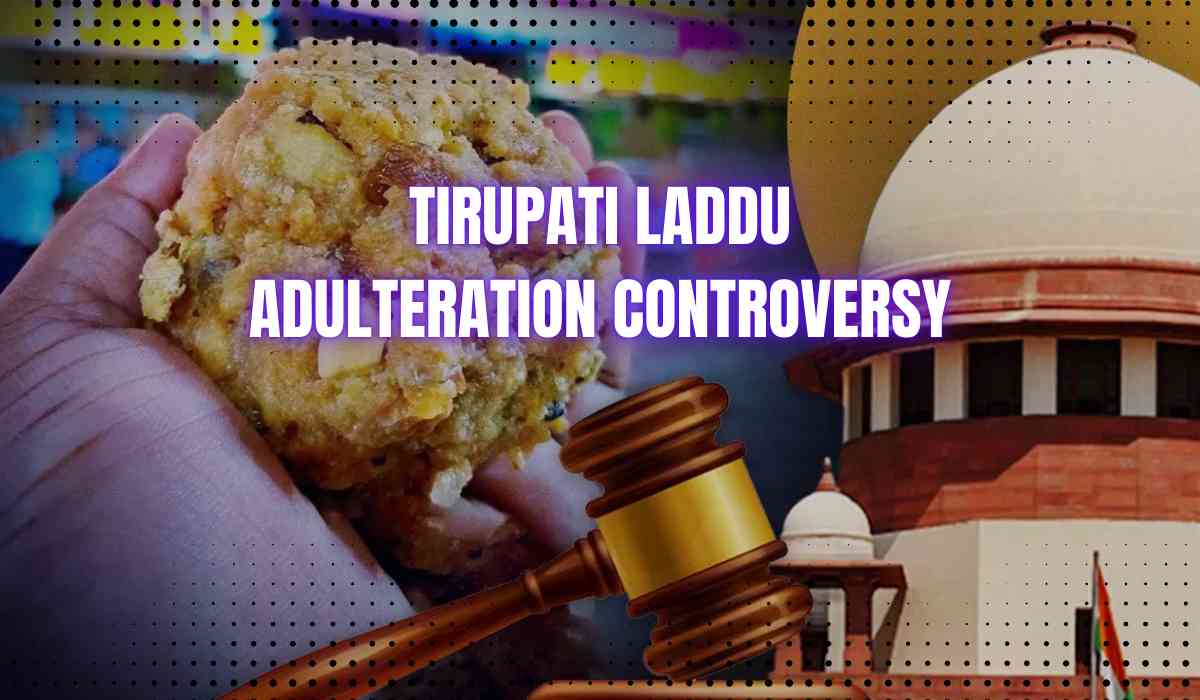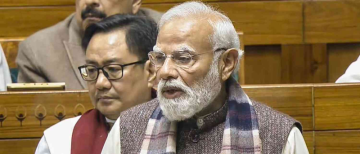The controversy over Tirupati laddoos has escalated, drawing attention from political and religious leaders. On September 18, Andhra Pradesh Chief Minister N Chandrababu Naidu accused the previous YS Jagan Mohan Reddy-led government of using animal fat in the preparation of the laddoos. In response, Reddy’s party, YSRCP, called these accusations politically motivated.
The issue has sparked nationwide outrage, especially among devotees of Lord Venkateshwara. Complaints about the quality of the prasadam have surfaced, with the Tirumala Tirupati Devasthanams (TTD) acknowledging issues but lacking the facility to test for foreign fat adulteration. The Supreme Court criticised Naidu for making claims without proof, advising that religion be kept separate from politics.
Amid the controversy, the Andhra Pradesh government has launched a Special Investigation Team (SIT) to investigate alleged irregularities in TTD board appointments under the YSRCP administration.
The Supreme Court has called for a new investigation into the Tirupati Laddu controversy, forming a five-member Special Investigation Team (SIT) to lead the investigation, including officers from the Central Bureau of Investigation, Andhra Pradesh Police, and FSSAI.
The involvement of political parties, the Amul brand, and the Supreme Court has further complicated the matter.
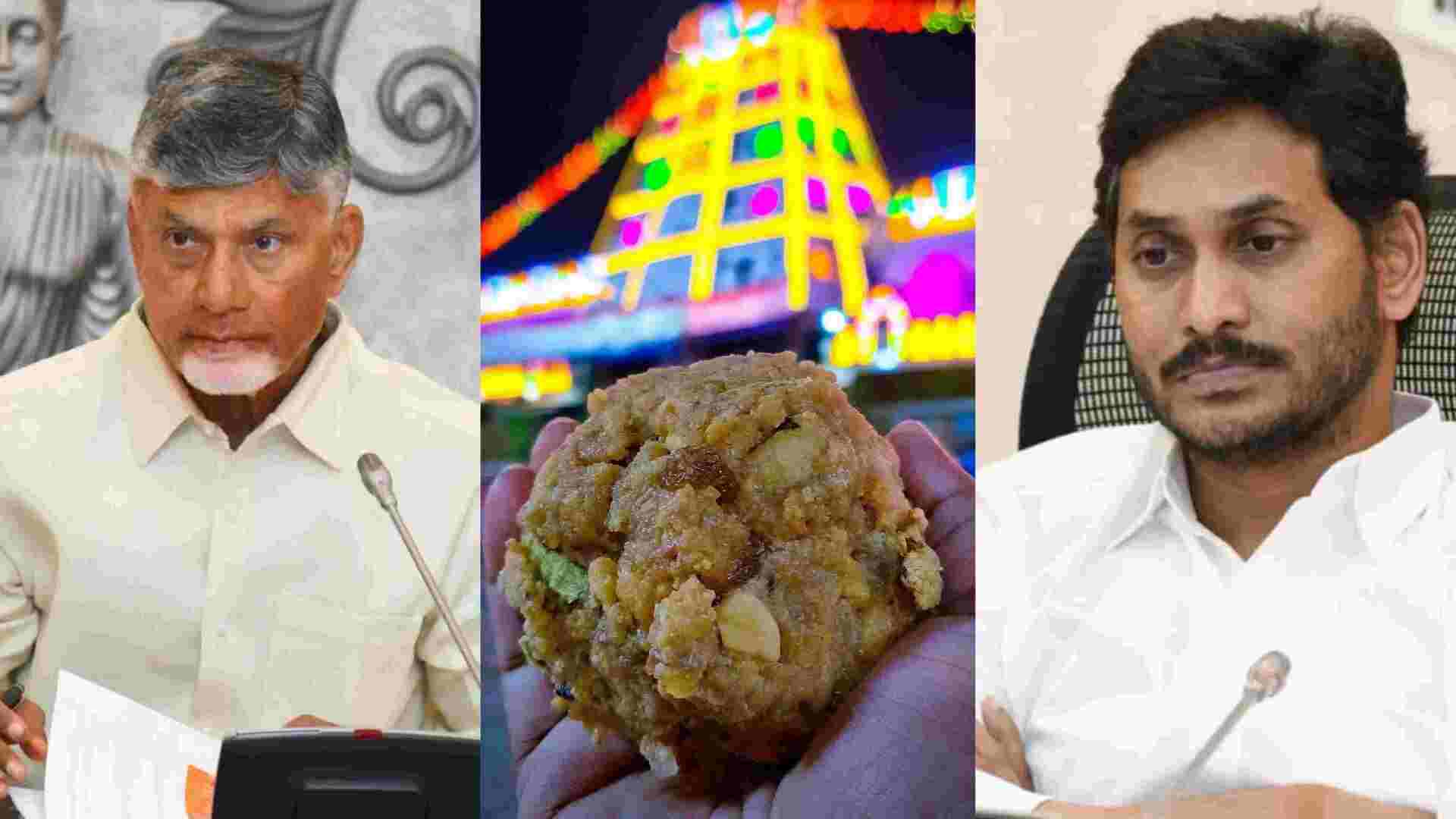
The Rich History and Significance of Tirumala Laddu: An In-Depth Exploration
Tirumala Laddu, a revered sweet offering, holds a special place in the hearts of millions of devotees visiting the Sri Venkateswara Swami Temple in Tirumala, Andhra Pradesh. This cherished prasadam (sacred food offering) has a storied history, intricate preparation methods, and cultural significance that spans centuries.
Origins of the Tirumala Laddu Tradition
-
Inception Date: The tradition of offering Laddu to Lord Venkateswara began on August 2, 1715.
-
Historical Mention: The 15th-century saint and composer Annamacharya referenced “Tirumala laddu” in his songs. Initially, it was not a prominent offering, possibly due to its smaller size and role as prasadam for devotees.
Evolution Through Centuries
-
Pallava Dynasty Origins: Dr. V Thimmappa, a history professor at Sri Venkateshwara University, notes that the offering of prasadam began in the ninth century during the Pallava dynasty, initially consisting of cooked rice.
-
Diverse Offerings: Over subsequent centuries, various forms of naivedyam (offering) such as sukkiyam, appam, manohara padi, and vada were introduced. Manohara padi is considered an early form of the laddu, first documented in 1715.
Transition to Modern Laddu
-
19th Century Developments: The Madras Presidency began selling prasadam to pilgrims, with vadas being particularly popular due to their preservability.
-
20th Century Transformation: In the early 20th century, the sweet bundi emerged as the initial form of laddu. By 1940, eight years after the establishment of the Tirumala Tirupati Devasthanams (TTD), sweet bundi was shaped into the modern laddu.
The Mirasidar System and Modern Changes
-
Kalyanam Iyengar’s Contribution: Kalyanam Iyengar, a spiritual saint, is credited with refining the laddu-making process. He introduced the Mirasidar (hereditary trustees) system, allowing brahman families to prepare laddus and receive a portion of each batch.
-
Abolition of the Mirasidar System: In 2001, after a Supreme Court legal battle, the TTD abolished the hereditary system, centralizing laddu preparation and distribution.
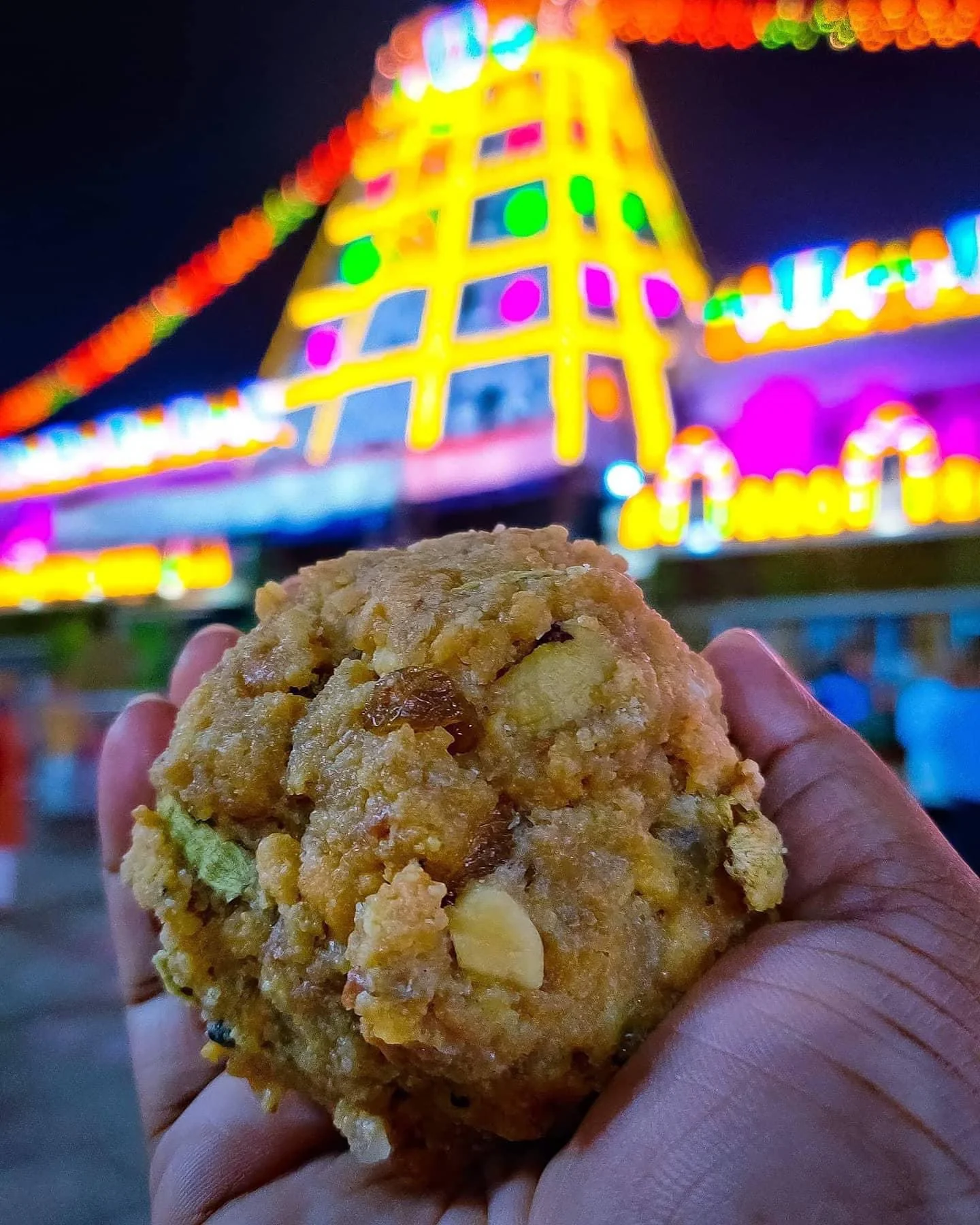
The Art of Making Tirupati Laddu
Traditional Methods
-
Location: Laddus are traditionally prepared in the temple kitchen, known as "potu," situated within the inner circle of the temple on the left side of the sanctum sanctorum.
-
Raw Material Transport: Ingredients are transported to the kitchen via conveyor belts.
-
Cooking Fuel Transition: Originally, firewood was used for cooking. This was replaced by LPG fuel in 1984 to modernize the process.
Modern Preparations
-
Adherence to Tradition: The preparation follows the "dittam," a list of ingredients specified in the "Aagama Sastra," though slight modifications have been made over recent decades to enhance taste.
-
Daily Production:
-
Quantity: Approximately 250,000 laddus are produced each day.
-
Ingredients:
-
10 tonnes of Bengal gram (besan) flour
-
10 tonnes of sugar
-
700 kg of cashew nuts
-
150 kg of cardamom
-
300 to 500 litres of ghee
-
500 kg of sugar candy
-
540 kg of raisins
-
-
Labor and Technology
-
Workforce: Over 600 individuals are employed in the laddu-making process.
-
Kitchen Customizations:
-
Installation of escalator belts
-
Implementation of bundi boxes for efficient production
-
-
Technological Advancements:
-
Imported Machinery: In February of the previous year, TTD announced plans to import ultra-modern machines from Germany, Switzerland, and Australia to boost production to six lakh laddus daily. However, these machines have yet to arrive, raising questions about implementation.
-
Previous Attempts at Automation: A similar machine imported from London in 1997 was unused until 2006 and subsequently dismantled, as automated laddu preparation conflicted with Agama principles.
Quality Assurance and Legal Safeguards
-
Geographical Indication (GI) Tag: In 2008, Tirupati laddus were registered for a GI tag to prevent black marketing and unauthorised production under the same name.
-
Patent Rights: In 2009, TTD obtained patent rights under the GI Act of 1999, ensuring exclusive preparation and naming rights.
-
Cultural Recognition: In 2017, the Indian government issued a postal stamp commemorating Tirupati Laddu as part of a cuisine series.
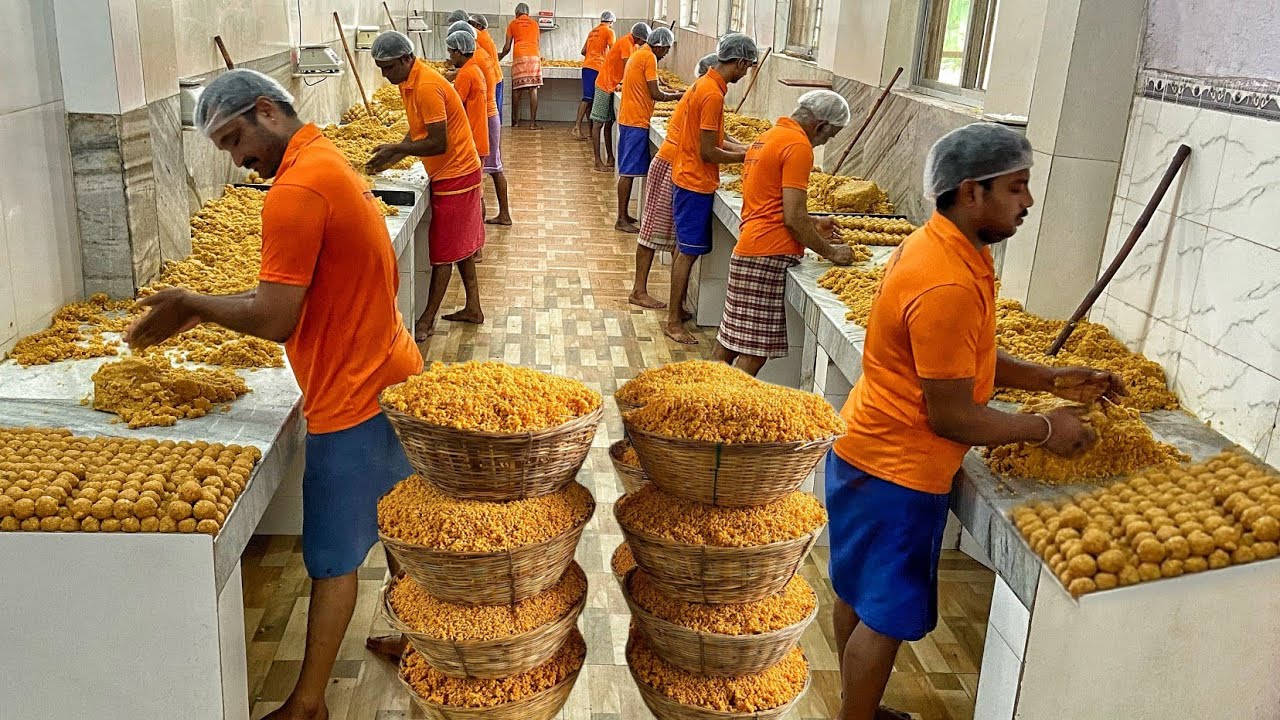
Varieties of Tirumala Laddoos
Tirumala Temple offers three primary types of laddoos, each serving different purposes and occasions:
-
Asthanam Laddoo
-
Occasions: Prepared during special festivals.
-
Recipients: Distributed to distinguished guests, including presidents, prime ministers, and international dignitaries.
-
Size: Approximately 750 grams each.
-
-
Kalyanotsavam Laddoo
-
Purpose: Offered to participants of the Kalyanotsavam, which involves special religious rituals accompanied by Vedic hymns.
-
Recipients: Also distributed during Arjitha Seva Grihastas, weekly services involving flower offerings and Samavedan recitations.
-
-
Proktham Laddoo
-
Purpose: General distribution to all pilgrims visiting the temple.
-
Size: Approximately 175 grams each.
-
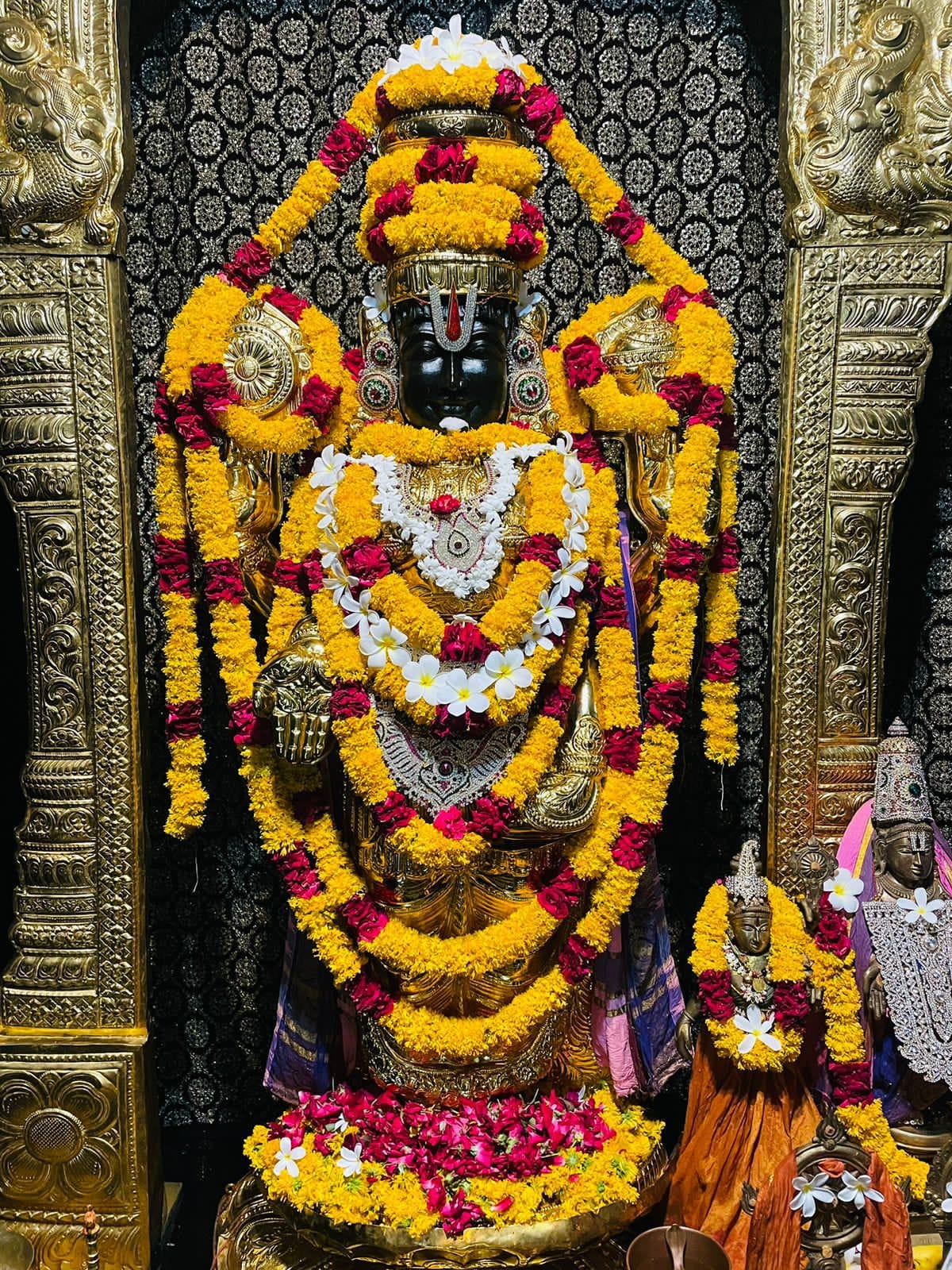
Ensuring Quality Through Historical Practices
Ancient Precautions
-
Inscriptions and Records: There are over 1,150 inscriptions in languages like Kannada, Sanskrit, Tamil, and Telugu on Tirumala and Tirupati temples, some dating back to the 8th century AD.
-
Ghee Transportation: Specific inscriptions detail the meticulous precautions taken during the transportation of ghee, a crucial ingredient in laddus.
Archaeological Evidence
-
Historical Emphasis: Archaeological findings highlight the importance placed by emperors and kings on the quality and preparation of prasadam offered to Lord Venkateswara.
What Sets Tirupati Laddu Apart
Unique Tradition and Recognition
-
Centuries-Old Practice: The tradition of offering laddus dates back over 300 years, making it one of the most enduring and cherished rituals at the Sri Venkateswara Swami Temple.
-
Geographical Indication (GI) Tag: This recognition not only safeguards the laddu's authenticity but also underscores its cultural and regional significance.
High Demand and Cultural Impact
-
Massive Production: Approximately one crore (10 million) laddus are sold monthly, with significant demand during major events like the 10-day Vaikuntadwara Darshan, which saw 3.6 million laddus sold.
-
Political and Cultural Gifts: Leaders like former Chief Minister Jagan Mohan Reddy have frequently gifted laddus to dignitaries, including Prime Minister Narendra Modi, highlighting the laddu’s esteemed status.
-
Global Distribution: In January this year, TTD dispatched over one lakh (100,000) laddus via cargo plane for the Pran Pratishtha of Ayodhya's Ram Mandir, showcasing its wide-reaching significance.
Exclusive Preparation
-
Sri Vaishnavite Craftsmanship: The laddu is exclusively crafted by Sri Vaishnavites in the 'potu' (laddu-making kitchen), maintaining traditional methods and authenticity.
-
Historical Naming: Temple inscriptions refer to the laddu as 'manoharam' since 1480, emphasizing its longstanding devotional importance.
Distinct Ingredients and Flavor
-
Key Components:
-
Boondhi (tiny fried balls of batter)
-
Jaggery syrup
-
Almonds and cashew nuts
-
Raisins
-
Ghee
-
-
Flavor Profile: These ingredients contribute to the laddu's unique aroma and rich taste, making it a beloved prasadam among devotees.
The Enduring Relevance of Tirumala Laddu
Devotional Significance
-
Favorite Offering: The Tirupati Laddu is believed to be Lord Venkateswara’s favorite naivedyam, symbolizing devotion and divine grace.
-
Cultural Staple: For over three centuries, the laddu has remained the main offering, reflecting the deep-rooted traditions of the Tirumala temple.
Modern-Day Production and Preservation
-
Advanced Packaging: Employing sophisticated packaging techniques, the TTD ensures that the laddus remain fresh for up to 15 days, catering to the high influx of devotees.
-
Production Expansion: To meet growing demand, the temple established additional kitchens, increasing daily laddu production significantly.
Legacy of Kalyanam Iyengar
-
Laddu Empire Builder: Kalyanam Iyengar is hailed as the founder of Tirupati’s laddu legacy. His expertise and dedication established the laddu as the temple’s principal prasadam.
-
Succession and Continuity: Iyengar’s legacy was carried forward by his family members, ensuring the continuity and enhancement of laddu-making traditions.
Where Does the Ghee Come From?
Every year, the Tirumala Tirupati Devasthanams (TTD) board purchases ghee through an e-tender process conducted every six months. The temple uses approximately 5 lakh kilograms of ghee annually, equating to around 42,000 kilograms each month. However, a controversy arose regarding the quality and source of the ghee used in the famous Tirupati laddus.
Ghee Supply and Karnataka Milk Federation (KMF)
-
The Karnataka Milk Federation (KMF), known for producing the Nandini brand, was previously one of the main suppliers of ghee to TTD.
-
KMF clarified that they discontinued supplying ghee to TTD four years ago due to pricing disputes. The Federation could not meet TTD’s requirement for lower-priced ghee after the Karnataka government raised milk prices by Rs 3.

The Controversy Surrounding Ghee
The ghee supply to TTD has recently come under scrutiny due to allegations of adulteration. On September 20, 2024, TTD's Executive Officer, J Shyamala Rao, revealed in a press conference that laboratory tests had detected the presence of animal fat, including lard (pig fat), in ghee samples supplied to the temple. Rao confirmed that the contractor responsible for providing the adulterated ghee would be blacklisted.
This revelation came shortly after Andhra Pradesh Chief Minister made an explosive claim at a National Democratic Alliance (NDA) legislative party meeting. He accused the previous government, led by the YSR Congress Party (YSRCP), of supplying substandard ingredients, including animal fat, for preparing the sacred laddus offered at Sri Venkateswara temple.
Key Highlights of the Controversy:
-
Lab test revelations: Presence of animal fats like beef tallow and lard in the ghee.
-
Blacklisting of contractors: TTD plans to sever ties with the supplier responsible for the adulteration.
-
Political context: Allegations linking the previous YSRCP government to the issue.
Lab Report Findings
Details of the Lab Report
-
The lab report, presented by Anam Venkata Ramana Reddy, indicated that the ghee samples contained beef tallow, lard, and fish oil.
-
The samples were submitted to the laboratory on July 9, 2024, and the report was issued on July 16, 2024.
-
According to Reddy, the ghee used in the temple's prasadam was found to contain animal fats, which severely violates Hindu religious norms.
Reaction to the Lab Findings
-
Speaking to ANI, Reddy reiterated that the laboratory results confirmed the presence of beef tallow, lard, and fish oil in the ghee supplied to TTD. He stressed that the inclusion of such ingredients was an affront to Hindu beliefs, as the prasadam offered to Lord Venkateswara is considered sacred.
-
The ghee, which was meant to be pure, had a low S-value of 19.7, further indicating its compromised quality.
About the Testing Laboratory
The laboratory responsible for the tests, CALF (Centre for Analysis and Learning in Livestock & Food), is a multidisciplinary analytical lab under the National Dairy Development Board (NDDB), based in Anand, Gujarat. The findings were consistent with former Chief Minister Chandrababu Naidu's allegations about the quality of ghee used in temple offerings.

The controversy surrounding the sacred prasadam (offering) of Tirupati laddus has caused a significant stir in India, particularly among the Hindu community. This timeline outlines the key events that unfolded since September 18, when allegations of adulteration first emerged, shaking the faith of countless devotees.
September 18: Allegations of Adulteration Surface
Naidu Accuses Previous Government
-
Event: During a legislature party meeting in Vijayawada, Andhra Pradesh Chief Minister Chandrababu Naidu accused the previous YSR Congress Party (YSRCP) government of using adulterated ghee containing animal fat in the preparation of Tirupati laddus.
-
Political Fallout: Naidu's claims ignited a political uproar, suggesting that the integrity of the revered Tirumala temple had been compromised.
-
Lab Findings Presented: TDP spokesperson Anam Venkata Ramana Reddy held a press conference, presenting a Gujarat-based laboratory report allegedly revealing the presence of beef tallow, lard, and fish oil in the ghee.
-
Minister's Shock: Andhra Pradesh IT Minister Nara Lokesh, Naidu's son, expressed dismay, stating, “The Lord Venkateswara Swamy temple at Tirumala is our most sacred temple. I am shocked to learn that the Y.S. Jagan Mohan Reddy administration used animal fat instead of ghee in the Tirupati Prasadam.”
-
Supreme Court's Involvement: As the Supreme Court began to review the allegations, Justices B.R. Gavai and K.V. Viswanathan highlighted the potential impact of Naidu's statements on public sentiment, leading to discussions on the investigation's direction.
Formation of a Special Investigation Team (SIT)
-
Announcement: Naidu announced the formation of a Special Investigation Team (SIT) led by an officer of inspector general rank to investigate the claims. He emphasized that the alleged use of animal fats had hurt the sentiments of many Hindus.
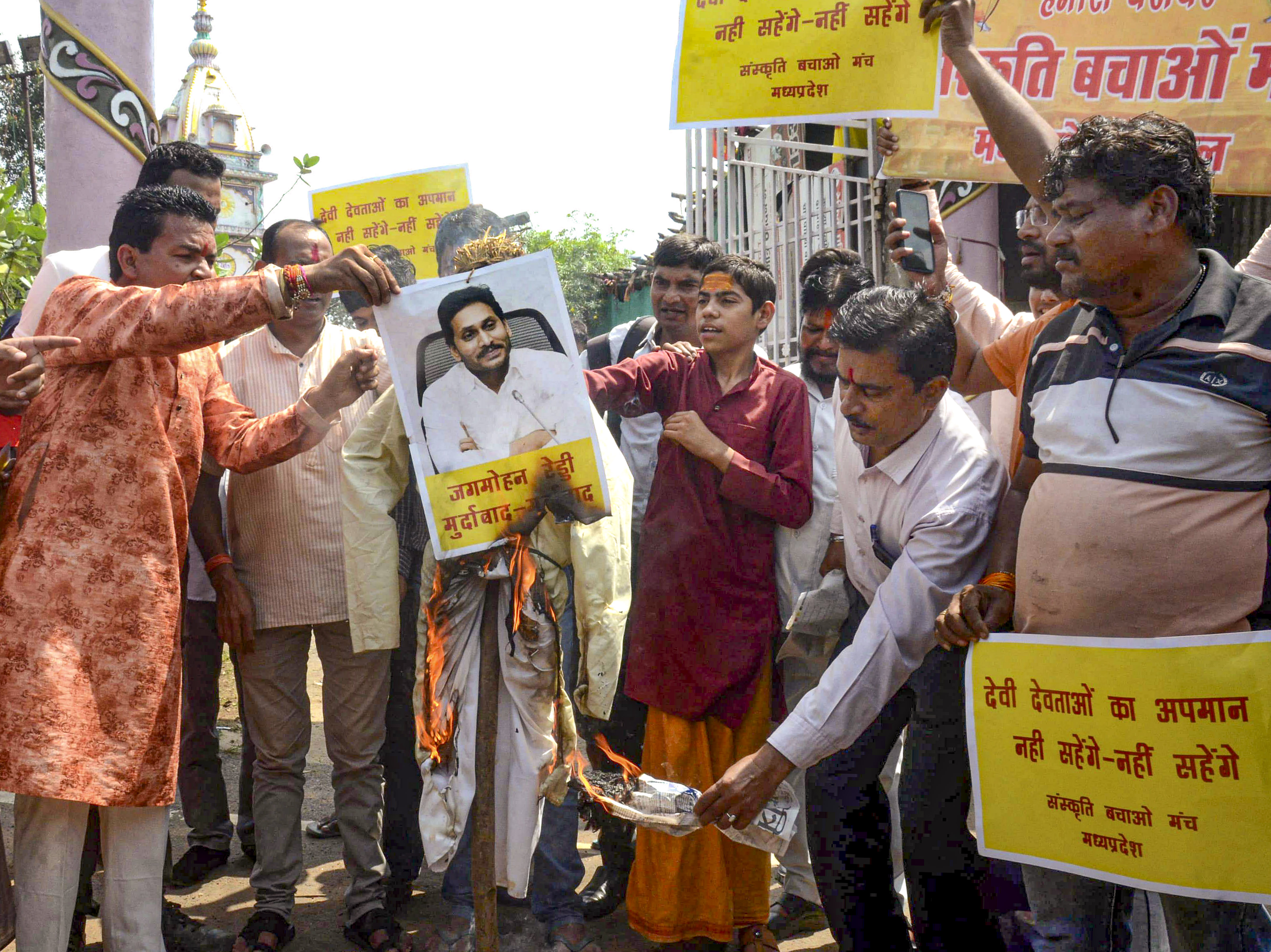
September 19: Intensifying Investigations and Reactions
TDP Shares Controversial Lab Report
-
TDP's Claims: Anam Venkata Ramana Reddy released a document purportedly from the National Dairy Development Board in Gujarat, confirming the presence of beef tallow and lard in the prasadam.
-
Significance of Findings: Reddy emphasized the implications of using animal fat in the preparation of prasadam, stating it was a direct affront to Hindu beliefs.
Karnataka Milk Federation Responds
-
Denial of Supply: The Karnataka Milk Federation clarified that they had not supplied ghee to the TTD for the past four years, asserting that they only resumed supply after the TDP came to power in the state.
TTD's Panel to Examine Ghee Quality
-
Committee Formation: The TTD established a four-member panel to investigate the quality of ghee used in laddus. This committee comprises dairy experts and is expected to submit a report within a week.
Political Parties Demand Action
BJP and Congress Enter the Fray
-
BJP's Call for Investigation: BJP spokesperson G. Bhanuprakash Reddy urged a thorough investigation, labeling the previous YSRCP government as "blatantly anti-Hindu."
-
Congress Party's Stance: The Congress party joined the debate, demanding a comprehensive investigation into the claims, emphasizing that disrespect towards devotees' faith would not be tolerated.
Rahul Gandhi's Remarks
-
Demand for Inquiry: Rahul Gandhi, Leader of the Opposition in the Lok Sabha, expressed concern over the allegations and called for a careful examination of the situation to maintain the sanctity of religious spaces.
September 20: Counterclaims from YSRCP
Reddy Defends Ghee Quality
-
Rebuttal: Former Chief Minister Jagan Mohan Reddy dismissed Naidu's claims, asserting that the ghee used in laddus is sourced from NABL-certified companies and undergoes rigorous testing.
-
Political Accusations: Reddy accused Naidu of exploiting religious sentiments for political gain and announced plans to write to Prime Minister Narendra Modi and Chief Justice of India DY Chandrachud to clarify the situation.
Reactions from Former TTD Chairmen
-
Y.V. Subba Reddy and Bhumana Karunakar Reddy, former chairpersons of the Tirumala Tirupati Devasthanams (TTD), condemned Naidu’s claims as malicious and an affront to Hindu beliefs. They challenged him to affirm the truth of his statements before the deity, warning of legal repercussions if he failed to provide evidence.
September 21: Efforts to Restore Sanctity
Andhra Government Initiates Sanitation
-
CM's Statements: CM Naidu accused the YSRCP government of desecrating the sacred space and vowed to uphold the sanctity of the Tirupati temple.
-
Sanitation Measures: The state government began implementing steps to sanitize the temple, ensuring the quality and purity of offerings.
TTD Reassures Devotees
-
Restoration of Sanctity: The TTD announced that the sanctity of the sacred laddu prasadam had been restored, asserting the divinity and purity of the offerings.
Ritualistic Sanitation Conducted
-
‘Shanti Homam Panchagavya Prokshana’: A four-hour ritualistic sanitization was held to purify the temple and address the alleged desecrations during the previous government’s tenure.
October 4: Supreme Court orders fresh investigation, forms 5-member SIT
On Friday, the Supreme Court called for a new investigation into the Tirupati laddu controversy and formed a five-member Special Investigation Team (SIT) to lead the inquiry. The SIT will include officers from the Central Bureau of Investigation (CBI), Andhra Pradesh Police, and the Food Safety and Standards Authority of India (FSSAI).
The Tirupati laddu controversy has become a focal point of political tension in Andhra Pradesh, pitting the ruling TDP against the YSRCP, with both sides accusing each other of manipulating religious sentiments for political gain. As investigations continue and various parties call for accountability, the implications of these allegations may have lasting effects on the faith and trust of the Hindu community in the sanctity of their religious practices.
With inputs from agencies
Image Source: Multiple agencies
© Copyright 2024. All Rights Reserved Powered by Vygr Media.

